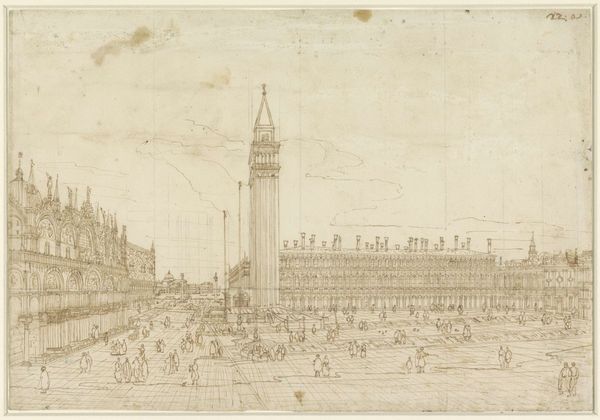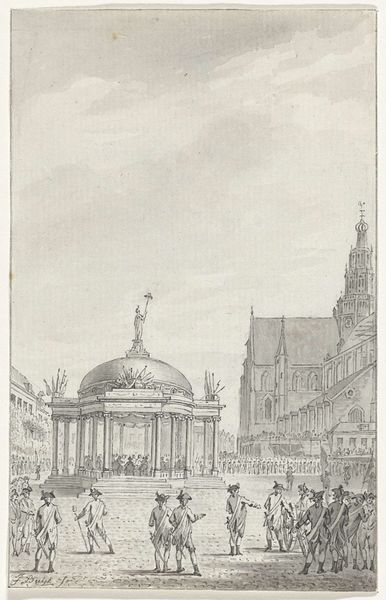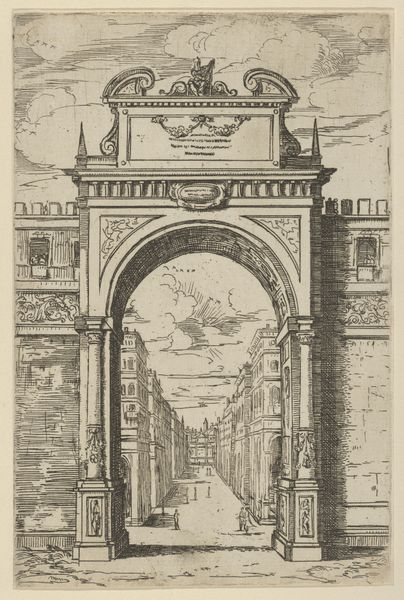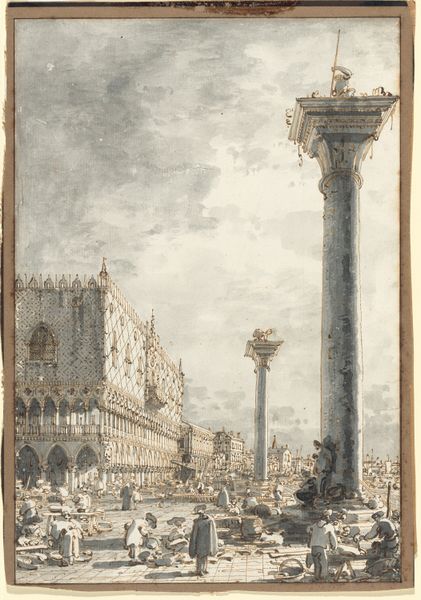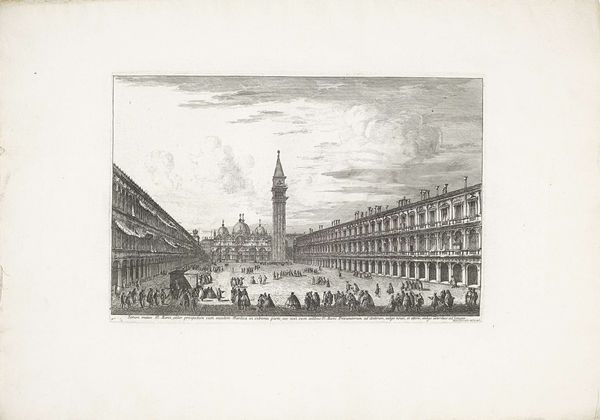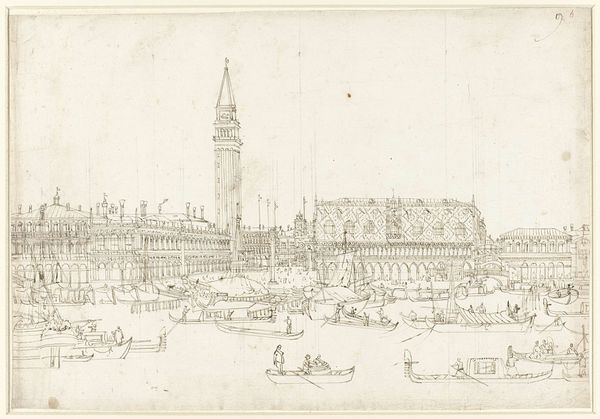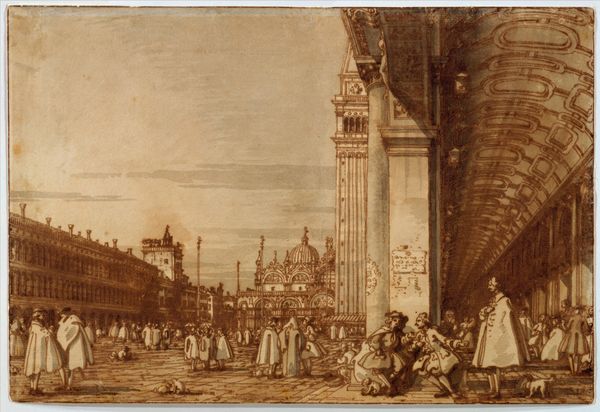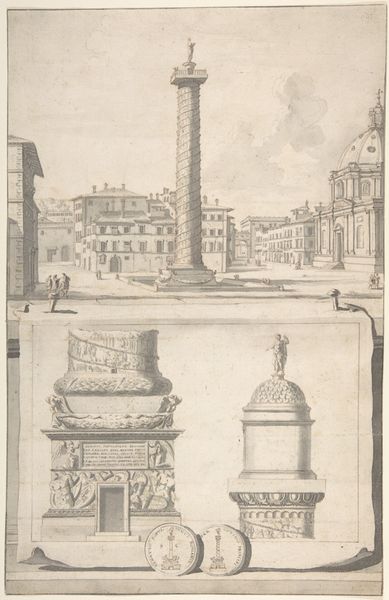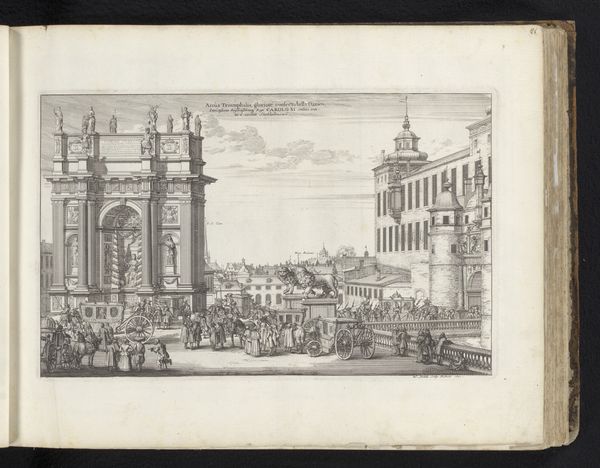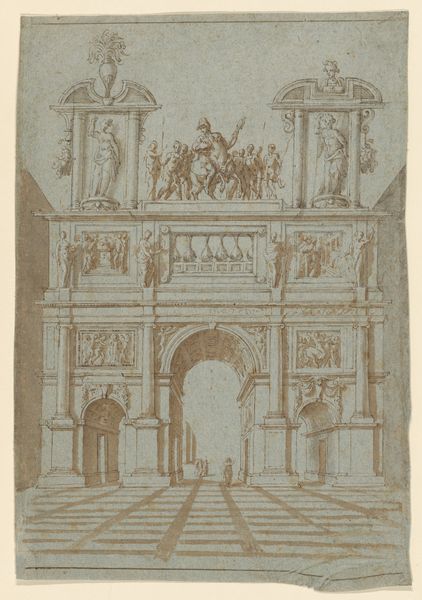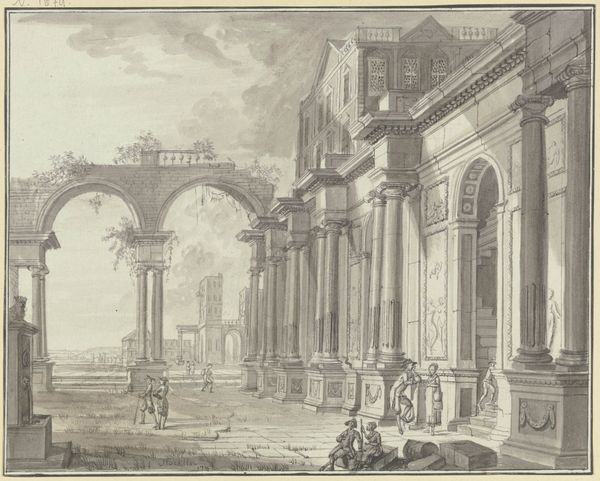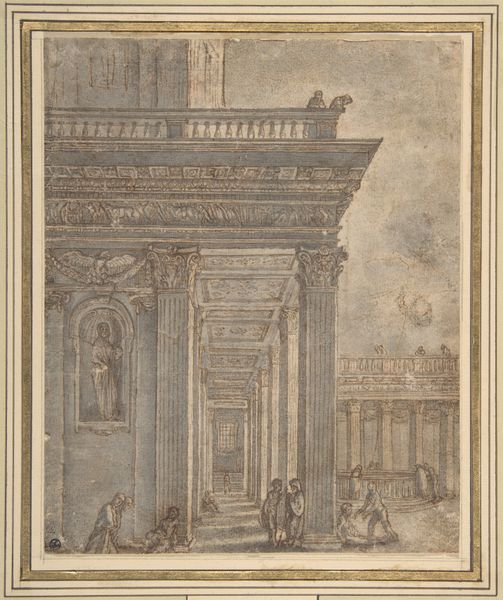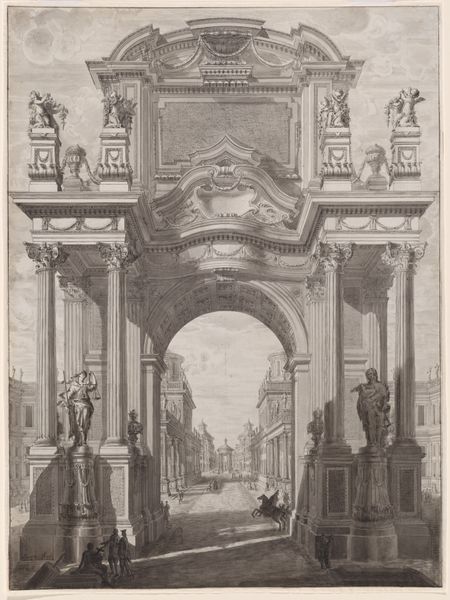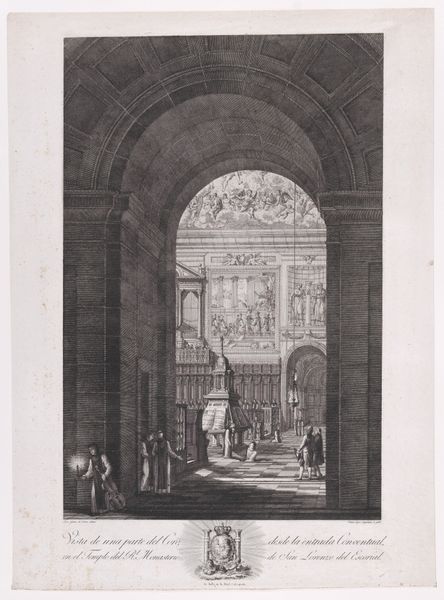
Dimensions: height 355 mm, width 225 mm
Copyright: Rijks Museum: Open Domain
Editor: So, here we have Canaletto's "Piazza San Marco, Venice, Seen from the South-west," dating back to sometime between 1755 and 1765. It's a watercolor that gives off such a bustling, almost theatrical feel to me, looking through an archway onto a marketplace. What really stands out to you in this piece? Curator: The theatricality you mentioned rings true, almost as if we're catching a stolen glance at a stage play. I find myself pondering that archway. It frames the entire scene, sure, but also serves as a gentle nudge—inviting us to step into Canaletto's Venice, wouldn't you agree? Almost like walking back in time through an expertly crafted portal. Does it beckon you in? Editor: Absolutely! The archway definitely acts as an invitation. The precision in capturing the architectural details—the Doge's Palace domes, the Campanile—is incredible! Curator: Yes, his precision is famous, of course. But what gets me, even more, is the almost photographic quality – Ironic since photography hadn’t taken hold when he painted it! So what story might the gathering of the crowd reveal? What whispers carried on the lagoon breeze do you imagine reached Canaletto as he captured this timeless scene? Editor: I suppose, at the very least, there is trade and cultural exchange happening right there. But I find the almost monotone use of color kind of interesting, even odd. Curator: Well, for me, that subtle palette enhances that sense of temporal distance. Canaletto is less about showing off his skill with color, and more intent on allowing us this shared memory, something familiar yet undeniably far away. So, what will you take away from our little journey here? Editor: It makes me appreciate how much context matters. Canaletto isn't just showing us a pretty picture; he's offering us a connection to a different era and a chance to feel present within it, wouldn't you agree? Curator: Perfectly put! Now, perhaps we should step through the portal into the next masterpiece?
Comments
rijksmuseum over 2 years ago
⋮
In the 18th century, Rome and Venice were flooded with tourists, mainly from England. Canaletto took full advantage of this with his charming drawn or painted cityscapes depicting the famous Venetian monuments. He probably sold his drawings as souvenirs while working on the streets. ‘By chance’ he would have with him a portfolio with all sorts of cityscapes he had previously drawn in his studio.
Join the conversation
Join millions of artists and users on Artera today and experience the ultimate creative platform.
